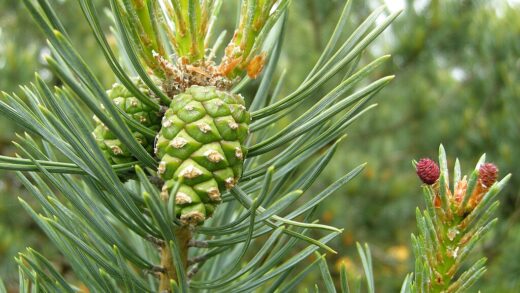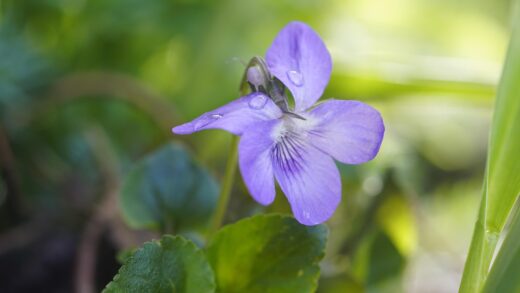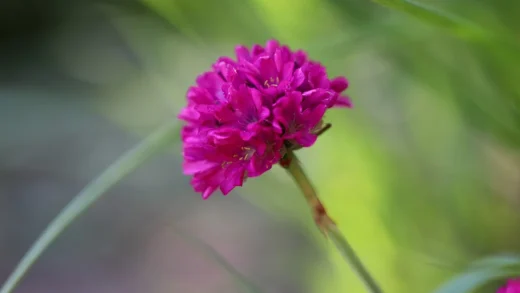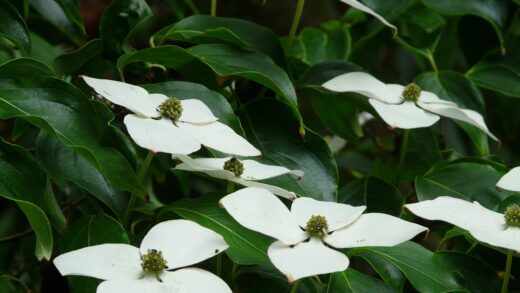The successful establishment of the Balkan squill in any garden landscape begins with a solid understanding of its fundamental planting requirements. This charming, late-spring flowering bulb, known for its intense amethyst-blue, star-shaped flowers, is a relatively undemanding plant, but adhering to best practices during planting will ensure its longevity and a spectacular annual display. Proper planting involves more than just digging a hole; it requires careful consideration of timing, depth, spacing, and soil preparation. By providing these bulbs with the ideal start in life, you are laying the groundwork for them to thrive, multiply, and create the breathtaking carpets of color for which they are so beloved by gardeners.
Creating the right foundation is paramount. The Balkan squill originates from the meadows and open woodlands of the Balkans, a region that informs its preference for certain soil conditions. It flourishes in a soil that is rich in humus and organic matter, yet possesses excellent drainage. This combination ensures that the bulbs have access to consistent moisture during their spring growth phase without being subjected to waterlogged conditions, which can lead to rot, especially during their summer dormancy. Therefore, preparing the planting site is a non-negotiable first step in the process, often involving the amendment of the existing soil to create the perfect balance of moisture retention and drainage.
The timing of planting is another critical factor that significantly influences the success of the bulbs. Like most spring-flowering bulbs, the Balkan squill should be planted in the autumn. This allows the bulbs a crucial period during the cooler, moister months to develop a strong and healthy root system before the ground freezes. This root development is essential for the bulb to anchor itself and to efficiently absorb water and nutrients once growth commences in the spring. Planting too early in a warm autumn or too late in the winter can compromise this vital establishment phase.
Beyond the technical aspects of soil and timing, the aesthetic considerations of planting are what truly bring the garden to life. The Balkan squill is most effective when planted in generous drifts or large, informal groups rather than in rigid lines or small, isolated pockets. This approach mimics their natural growth habit and creates a more impactful and naturalistic visual display. Whether planted in a border, a rock garden, or naturalized in a lawn, thoughtful placement and grouping will maximize the beauty of their profuse, starry blooms and ensure they become a highlight of the late-spring garden.
Optimal planting time
The window for planting Balkan squill bulbs is quite specific and is a crucial determinant of their future success. The ideal time to get these bulbs into the ground is during the autumn months, typically from September through to November. This period provides the perfect combination of cooling soil temperatures and sufficient moisture from autumn rains. Planting within this timeframe allows the bulbs to undergo a necessary period of root development before the ground becomes frozen in winter. A well-established root system is vital for the bulb’s ability to withstand the cold and to spring into vigorous growth as soon as the weather warms.
More articles on this topic
Delaying planting until late winter or early spring is strongly discouraged. While the bulbs may still grow and even produce a few flowers, their performance will be significantly compromised. Without the autumn period to establish their roots, the plants will lack the foundational support needed to sustain robust growth and prolific flowering. They may produce smaller, weaker flowers and may struggle to store enough energy for the following year, potentially leading to a decline in the colony’s health over time. The energy expended on flowering without a proper root system can severely deplete the bulb’s reserves.
Conversely, planting the bulbs too early in the autumn, when the soil is still warm from the summer, can also present problems. Warm soil temperatures can sometimes encourage the bulbs to sprout premature top growth. This leafy growth is then vulnerable to damage from the first frosts of winter, which can weaken the bulb and waste valuable energy reserves that should be directed towards root formation. Therefore, waiting until the ambient temperatures have consistently cooled is a wise strategy to ensure the bulb’s energy is channeled correctly into establishing a strong underground presence.
In essence, the autumn planting season acts as a critical preparatory phase for the Balkan squill. It is during these months that the unseen, yet essential, work of root establishment takes place. This period of quiet development beneath the soil surface is the key to unlocking the vibrant and profuse floral display that will emerge in the late spring. By respecting this natural cycle and planting at the optimal time, you provide the bulbs with the very best start, setting the stage for many years of beautiful, trouble-free flowering.
Soil preparation techniques
Before a single Balkan squill bulb is placed in the ground, thorough preparation of the soil is essential. These bulbs demand a growing medium that offers both excellent drainage and the ability to retain some moisture, a balance that is not always naturally present in garden soils. The first step is to assess your existing soil type. Heavy clay soils, while often nutrient-rich, tend to become compacted and waterlogged, creating an anaerobic environment that is fatal to bulbs. Sandy soils, on the other hand, drain very quickly but struggle to hold onto the water and nutrients that the bulbs need during their active growth period.
More articles on this topic
To improve heavy clay soil, the incorporation of organic matter and grit is the most effective strategy. Dig over the planting area to a depth of at least 20-25 centimeters and work in generous quantities of well-rotted compost, leaf mold, or manure. This will help to break up the dense clay particles, creating a more friable structure. Additionally, adding horticultural grit or small gravel will create permanent channels for water to drain away freely, preventing the bulbs from sitting in cold, wet conditions, especially during their winter dormancy. This is a one-time investment of effort that will pay dividends for the perennial health of the bulbs.
For soils that are excessively sandy and free-draining, the focus of soil preparation shifts to improving water and nutrient retention. Once again, organic matter is the key. Amending the soil with materials like coir, peat-free compost, or well-rotted manure will act like a sponge, holding moisture in the root zone where the bulbs can access it. These amendments also improve the soil’s fertility, providing a slow-release source of essential nutrients. When preparing a sandy bed, it is beneficial to dig the organic matter in deeply to encourage the bulb’s roots to grow downwards in search of moisture.
Regardless of your initial soil type, ensuring the area is free from perennial weeds before planting is a critical step. Weeds will compete with the squill for water, nutrients, and light, and they can be difficult to remove once the bulbs have been planted without disturbing them. Digging the area over thoroughly allows you to remove any persistent weed roots. Creating this clean, well-amended, and appropriately structured soil environment is the single most important action you can take to guarantee your Balkan squill bulbs will establish quickly, thrive, and multiply for years to come.
Planting depth and spacing
Once the ideal time has arrived and the soil has been meticulously prepared, the next critical step is the physical act of planting the bulbs, paying close attention to their depth and spacing. The correct planting depth is vital for the bulb’s protection and performance. A general rule of thumb for most bulbs, including the Balkan squill, is to plant them at a depth that is two to three times their own height. For the relatively small bulbs of Scilla litardierei, this typically translates to a planting depth of approximately 5 to 8 centimeters from the base of the bulb to the soil surface.
Planting the bulbs too shallowly can expose them to potential damage from frost heave in the winter, where the cycle of freezing and thawing can push them out of the ground. Shallow planting also leaves them more vulnerable to accidental damage from raking or hoeing and can cause them to dry out too quickly in the spring. Conversely, planting the bulbs too deeply can be equally detrimental. It forces the emerging shoot to expend a significant amount of its stored energy just to reach the soil surface, which can result in weaker growth, delayed flowering, or, in some cases, a complete failure to emerge at all.
Spacing is another important consideration that influences both the health of the plants and the visual impact of the display. To create a dense, naturalistic carpet of color, the bulbs should be planted relatively close together. A spacing of around 5 to 7 centimeters between each bulb is ideal. This allows each bulb enough room to develop without being overcrowded initially, but is close enough that they will grow together to form a substantial and impressive clump within a few seasons. Avoid planting them in single, straight lines, as this creates a very formal and unnatural look.
For a truly natural effect, a good technique is to gently toss the bulbs across the prepared planting area and plant them where they land. This method creates random, informal drifts that mimic how they would grow in their native meadow habitats. This approach works particularly well when naturalizing bulbs in a lawn or under deciduous trees. Careful attention to both planting depth and spacing will ensure the bulbs are well-protected, have the resources they need to grow strong, and will ultimately produce the stunning, cohesive display that makes the Balkan squill such a garden treasure.
Propagation methods
The Balkan squill can be propagated through two primary methods: by division of the bulbs and by seed. Division is the most common, reliable, and quickest method for increasing your stock of plants, as it produces plants that are genetically identical to the parent and will typically flower in the first season after being moved. Over time, a single bulb will produce numerous small offsets, or daughter bulbs, around its base, gradually forming a dense clump. This natural multiplication process provides the gardener with an easy means of propagation.
The process of propagation by division is best carried out in late summer or early autumn when the bulbs are dormant. Carefully excavate the entire clump with a garden fork, being cautious not to spear the bulbs. Once lifted, gently crumble the soil away to reveal the mass of bulbs. The smaller offsets can usually be teased away from the parent bulb by hand. Any bulbs that are of a reasonable size can be immediately replanted in a new, prepared location at the standard depth and spacing. This method not only increases your number of plants but also serves to de-congest and rejuvenate the original clump, promoting better flowering in subsequent years.
Propagation from seed is a more long-term project, requiring patience, but it can be a rewarding experience and can result in a large number of new plants. The seeds should be collected from the plants as soon as the seed pods turn from green to a yellowish-brown and begin to split open. It is crucial to collect them at this stage, as the pods can dehisce quickly, scattering the seed. The fresh seed should be sown immediately, as its viability can decrease with storage.
Sow the seeds thinly on the surface of a pot or seed tray filled with a well-draining, soil-based compost. Cover the seeds with a fine layer of horticultural grit, which helps to keep the seeds in place, suppresses moss growth, and allows for good air circulation. The pots should then be placed in a cold frame or a sheltered spot outdoors, where they will be exposed to the natural winter cold, as this stratification period is necessary for germination to occur. Germination can be erratic, but seedlings should begin to appear in the spring. It will, however, take several years, typically three to four, for the seedlings to grow into flowering-sized bulbs.


















